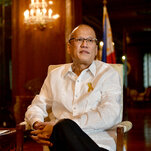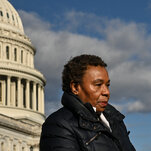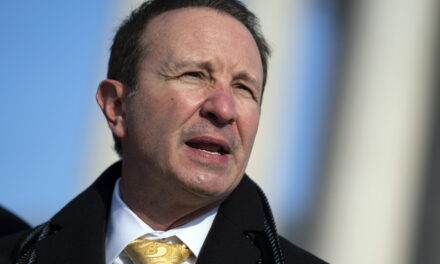
Benigno S. Aquino III, Ex-President of the Philippines, Is Dead at 61

A scion of the country’s most prominent pro-democracy political family, he was celebrated early in his administration for stabilizing the country’s faltering economy.


Benigno S. Aquino III, a former president of the Philippines and scion of the country’s most prominent pro-democracy political family, died in Manila on Thursday. He was 61.
His death was confirmed in a statement from Manuel Roxas II, a former minister of the interior whose family has long been associated with the Aquinos. The cause of his death was not immediately known; local news reports said that he had been admitted to a hospital.
Mr. Aquino served as president from 2010 to 2016, riding a wave of support after the death of his mother, Corazon Aquino, in 2009. Mrs. Aquino, a former president, and her husband, the slain Senator Benigno S. Aquino Jr., were leaders of the 1986 People Power Revolution that ended the two-decade dictatorship of President Ferdinand Marcos.
The younger Mr. Aquino, popularly known as Noynoy and PNoy, was celebrated early in his administration for battling corruption, stabilizing the country’s faltering economy and pushing through a reproductive rights law that made contraception more readily available to the poor — a move that had long been opposed by the Roman Catholic Church, in a devoutly Catholic country.
He was also among the rare leaders in Southeast Asia willing to stand up to China, which has multiple territorial disputes in the region. Mr. Aquino effectively sued Beijing over the two countries’ competing claims in the South China Sea, taking his case to an international tribunal in The Hague. In a landmark ruling in 2016, the tribunal found that there was no legal basis to support China’s expansive claim to sovereignty over the waters.
“It is with profound sadness that I learned this morning of the passing of former President Benigno S. Aquino III,” Justice Marvic Leonen, an Aquino appointee to the Supreme Court, said in a statement. “I knew him to be a kind man, driven by his passion to serve the people, diligent in his duties and with an avid and consuming curiosity about new knowledge of the world in general.”
But Mr. Aquino’s term was later marred by accusations of inaction and graft. In the aftermath of Typhoon Haiyan in 2013, which killed 6,000 Filipinos, many accused the president of being too slow to respond to the crisis. Some Western nations, including Canada, cited the Aquino administration’s lack of immediacy in their decisions to sidestep the government and donate money and aid directly to nongovernmental organizations instead.
Image

That same year, Mr. Aquino, who had made tackling corruption a hallmark of his administration, faced a series of high-profile allegations. They included the arrest of a businesswoman suspected of funneling money intended for poverty-reduction programs into lawmakers’ bank accounts and accusations of police officers involved in extrajudicial killings.
But it was the deaths of 44 police commandos in a 2015 clash with Muslim rebels that ultimately ended his presidency. The botched raid to capture a Muslim insurgent in the southern town of Mamasapano was, at the time, the deadliest day for the country’s police force in modern history.
In 2017, the country’s anti-graft prosecutor said Mr. Aquino should be held accountable for the officers’ deaths for allowing a suspended national police chief, accused of corruption, to oversee the operation.
Mr. Aquino was succeeded in 2016 by Rodrigo Duterte, a populist president whose policies have included a bloody war on drugs and whose authoritarianism has been compared to the Marcos regime.
Benigno Simeon Cojuangco Aquino III was born on Feb. 8, 1960, his parents’ only son. He worked in the family’s first business, sugar, before beginning a career in their second business — politics — in 1998.
In the years between, he joined his parents on the front lines of the battle to oust Marcos. His father’s assassination in 1983 is widely seen as a turning point for the revolution’s popular support.
In 1987, during his mother’s presidency, Mr. Aquino was shot five times during an attempted military coup. He lived with shrapnel in his neck for the rest of his life.
From 1998 to 2007, he served three terms in the House of Representatives, representing his family’s ancestral home, the northern province of Tarlac. He was midway through his first term in the Senate when he was elected president in 2010.
He never married and had no children, but is survived by four sisters.
Source: https://www.nytimes.com/2021/06/23/world/asia/benigno-aquino-III-dead.html
















